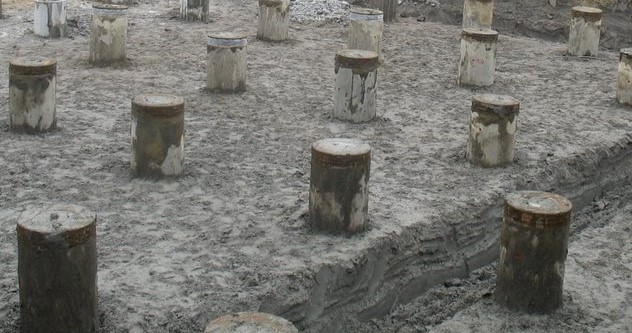In a previous article, the types of piles according to load transmission and functional behaviour were discussed. In this article named “Classification of Piles: Material Type“, the types of piles according to the type of material are discussed.
Classification of pile with respect to type of material
- Timber
- Concrete
- Steel
- Composite piles
Timber Piles
Used from earliest record time and still used for permanent works in regions where timber is plentiful. Timber is most suitable for long cohesion piling and piling beneath embankments. The timber should be in a good condition and should not have been attacked by insects. For timber piles of length less than 14 meters, the diameter of the tip should be greater than 150 mm. If the length is greater than 18 meters a tip with a diameter of 125 mm is acceptable. It is essential that the timber is driven in the right direction and should not be driven into firm ground. As this can easily damage the pile. Keeping the timber below the ground water level will protect the timber against decay and putrefaction. To protect and strengthen the tip of the pile, timber piles can be provided with toe cover. Pressure creosoting is the usual method of protecting timber piles.
Concrete Piles
Pre cast concrete Piles or Pre fabricated concrete piles: Usually of square (see figure 1b), triangle, circle or octagonal section, they are produced in short length in one metre intervals between 3 and 13 meters. They are pre-caste so that they can be easily connected together in order to reach to the required length (figure 1a) . This will not decrease the design load capacity. Reinforcement is necessary within the pile to help withstand both handling and driving stresses. Pre stressed concrete piles are also used and are becoming more popular than the ordinary pre cast as less reinforcement is required.
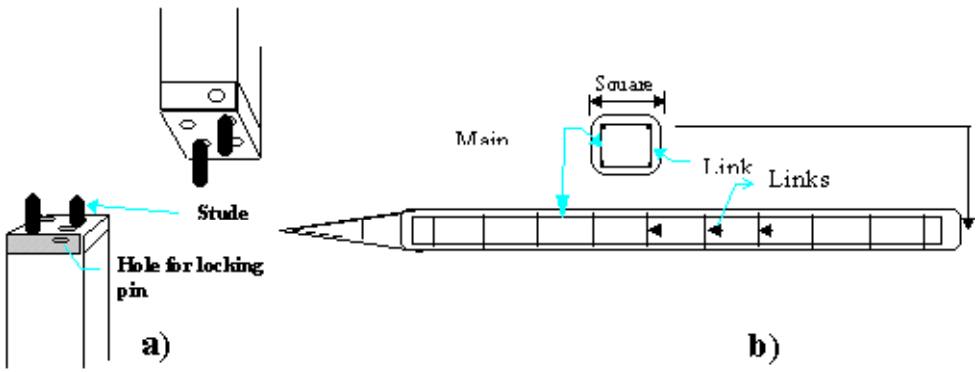
The Hercules type of pile joint (Figure 2) is easily and accurately cast into the pile and is quickly and safely joined on site. They are made to accurate dimensional tolerances from high grade steels.
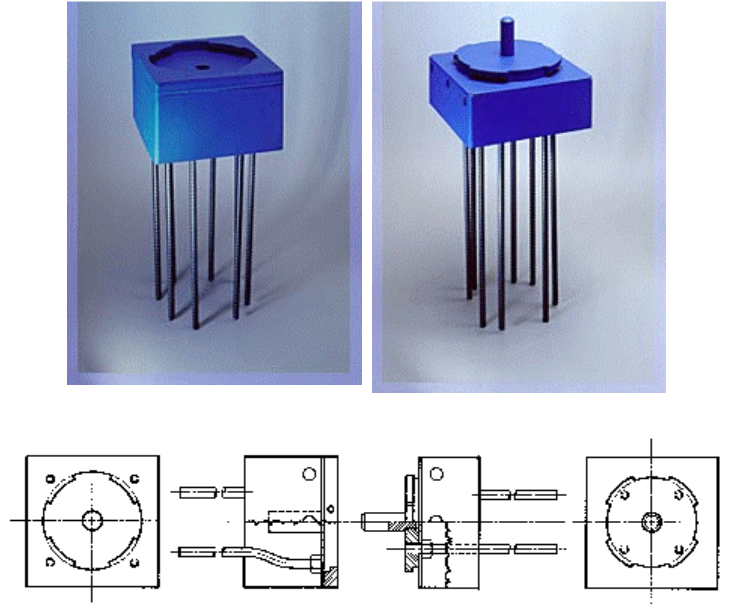
Driven and cast in place Concrete piles
Two of the main types used in the UK are: West’s shell pile : Pre cast, reinforced concrete tubes, about 1 m long, are threaded on to a steel mandrel and driven into the ground after a concrete shoe has been placed at the front of the shells. Once the shells have been driven to specified depth the mandrel is withdrawn and reinforced concrete inserted in the core. Diameters vary from 325 to 600 mm.
Franki Pile: A steel tube is erected vertically over the place where the pile is to be driven, and about a metre depth of gravel is placed at the end of the tube. A drop hammer, 1500 to 4000kg mass, compacts the aggregate into a solid plug which then penetrates the soil and takes the steel tube down with it. When the required depth has been achieved the tube is raised slightly and the aggregate broken out. Dry concrete is now added and hammered until a bulb is formed. Reinforcement is placed in position and more dry concrete is placed and rammed until the pile top comes up to ground level.
Steel Piles
Steel piles: (figure 3) steel/ Iron piles are suitable for handling and driving in long lengths. Their relatively small cross-sectional area combined with their high strength makes penetration easier in firm soil. They can be easily cut off or joined by welding. If the pile is driven into a soil with low pH value, then there is a risk of corrosion, but risk of corrosion is not as great as one might think. Although tar coating or cathodic protection can be employed in permanent works.
It is common to allow for an amount of corrosion in design by simply over dimensioning the cross-sectional area of the steel pile. In this way the corrosion process can be prolonged up to 50 years. Normally the speed of corrosion is 0.2-0.5 mm/year and, in design, this value can be taken as 1mm/year.
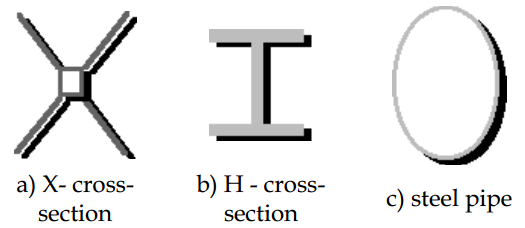
Composite Piles
Combination of different materials in the same of pile. As indicated earlier, part of a timber pile which is installed above ground water could be vulnerable to insect attack and decay. To avoid this, concrete or steel pile is used above the ground water level, whilst wood pile is installed under the ground water level (see figure 4).
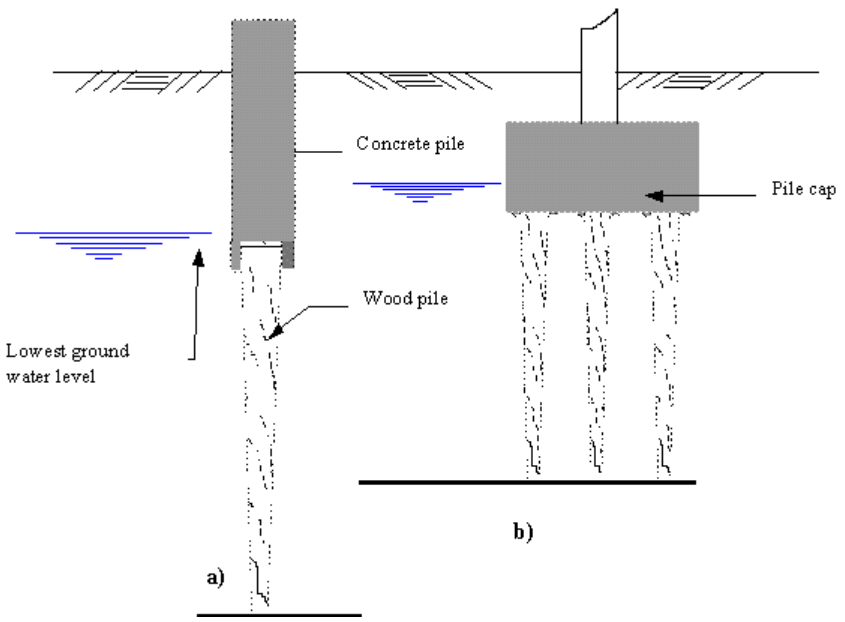
Source: Pile Foundation Design: A Student Guide by: Ascalew Abebe & Dr Ian GN Smith, School of the Built Environment, Napier University, Edinburgh
